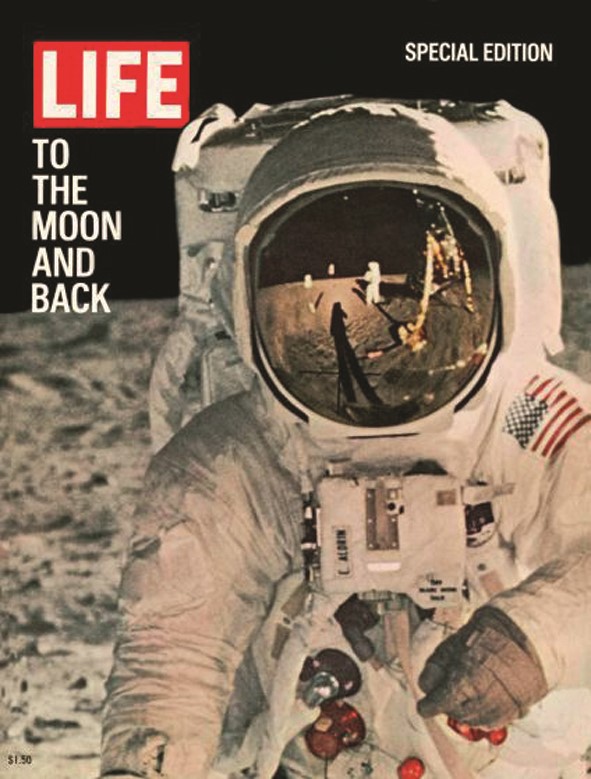Rewind: Life magazine

Life magazine was a long-time champion of world-class photojournalism. But its closure preceded the 2008 recession and the wholesale demise of many global publications. Could Life have been revived through a brand repositioning?
Shane Kerr, global senior brand manager, Durex, RB
In 2016, visual snapshots of human life are the primary currency for any media brand wishing to capture an audience. A poignant image of a refugee, a portrait of an iconic celebrity or simply a funny meme – these are today’s engagement hooks. Surely Life was made for 2016? Marketers may debate the priority
order of the various elements that go into creating a successful business, but ‘brand’ and ‘reach’ will always be near the top of every list.
Life magazine had a strong purpose and heritage. Iconic brands always need to stay true to these, even as they evolve. Life’s brand heritage was what gave it a past but also a potential future. What needed to evolve was the way in which they brought this to life – relevant content in relevant ways (as true for ’70s print as ’00s digital).
Whether it is listings in a store or an online presence, reach is what helps get your brand consumed. As Life’s industry went through major changes, it should’ve been an opportunity.
With traditional push communication declining, today’s brands need to engage consumers as part of content creation. Being a leader in bringing the audience with them on Life’s journey (in every sense!), could have been the key to retaining loyal consumers and attracting new ones. A new digital ecosystem, with new revenue models, could have helped them not just survive but thrive in a new visual-led world.
Sholto Lindsay-Smith, CEO, Industry
Life was an iconic brand which played a crucial role in shaping the way middle class post-war Americans viewed themselves and the world around them. It failed because it wasn’t quick enough to adapt to the digital revolution and the dramatic changes to the way we all create, curate and share images.
It’s sad to see a brand with such intrinsic cultural value fail, but saving it would have required a total reinvention; a fundamental change in its offering. It needed to become the online home of world-class photojournalism, rather than an expensive weekly print magazine finding itself increasingly at the mercy of dwindling advertisers and the growing demand for celebrity-focused online news. The Guardian owns this space with its Photo Highlights of the Day – the first page I always visit to get a sense of the big stories told through a carefully curated collection of incredible photographs.
Life (and poor old Walter Mitty) allowed the very essence of what made it great, the purity and clarity of its photojournalism, to be swallowed up by the digital era and it failed to realise the true potential of its archive. A brand repositioning alone could never have revived it.
Dustin Longstreth, SVP, strategy group director, CBX
Repositioning the Life brand would have been as effective as repositioning 8-track players, rotary phones, or the Republican Party. The problem wasn’t the brand. It was the platform itself. No amount of repositioning can distract from fundamental product issues. As the saying goes, “If there’s blood on your shirt, laundry may not be your biggest problem.”
Brand positioning is effective for the task of distinguishing your value proposition from competitors in a given category. Life faced an entirely different dynamic: disruptive technological and cultural shifts so significant they transformed the competitive landscape. It wasn’t a matter of distinguishing from competitors. It was a matter of recognising that traditional publishing models and photography capabilities had been obliterated by the fast march of digital technology.
And yet, the desire to connect to our world through photography and visual storytelling has never been stronger.
More than positioning, Life needed clarity of purpose. Positioning distinguishes your brand within a category. Purpose defines your role within culture. Digging into the history of LIFE would have provided rich context for its cultural relevance. In its first issue, Life shared the brand’s core belief: “While there is Life, there is hope.”
Powerful? Relevant? Check. Check. Instead of trying to reposition Life for the changing times, it would have been better served by recognising what was eternal about the brand. An unwavering commitment to the original principles that made it great would have allowed Life to stay true to the brand while leading the charge toward its own reinvention – reinvesting in new technology, new platforms and new business models – and relevance for generations to come.












